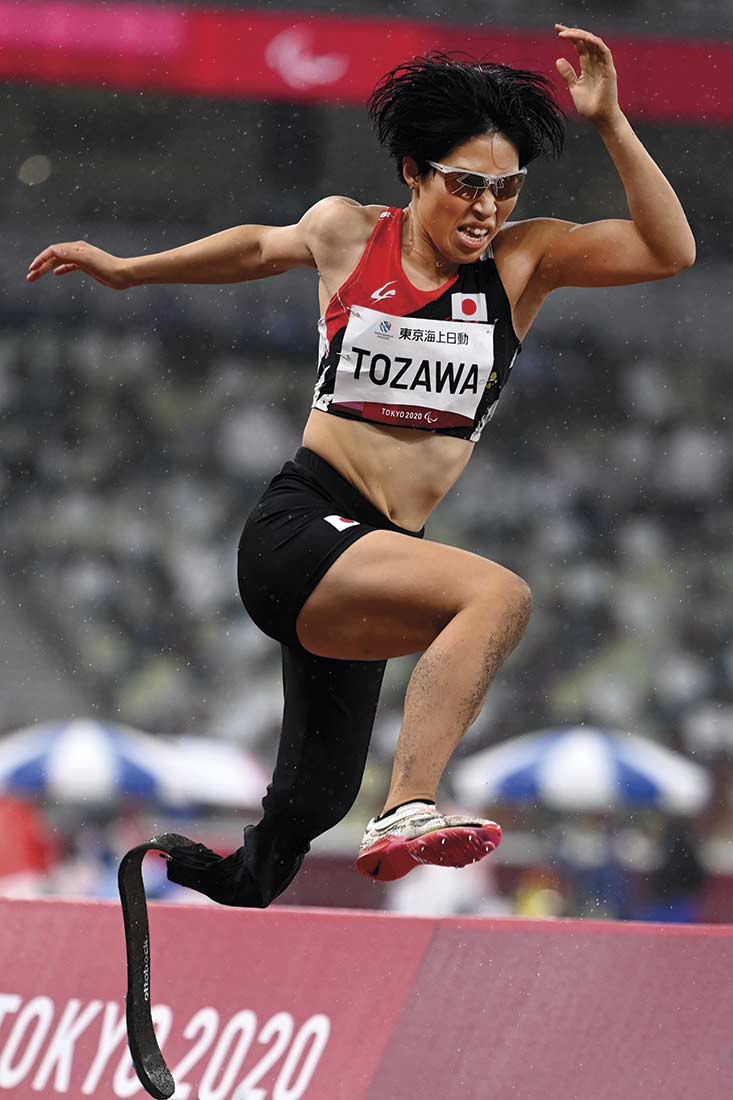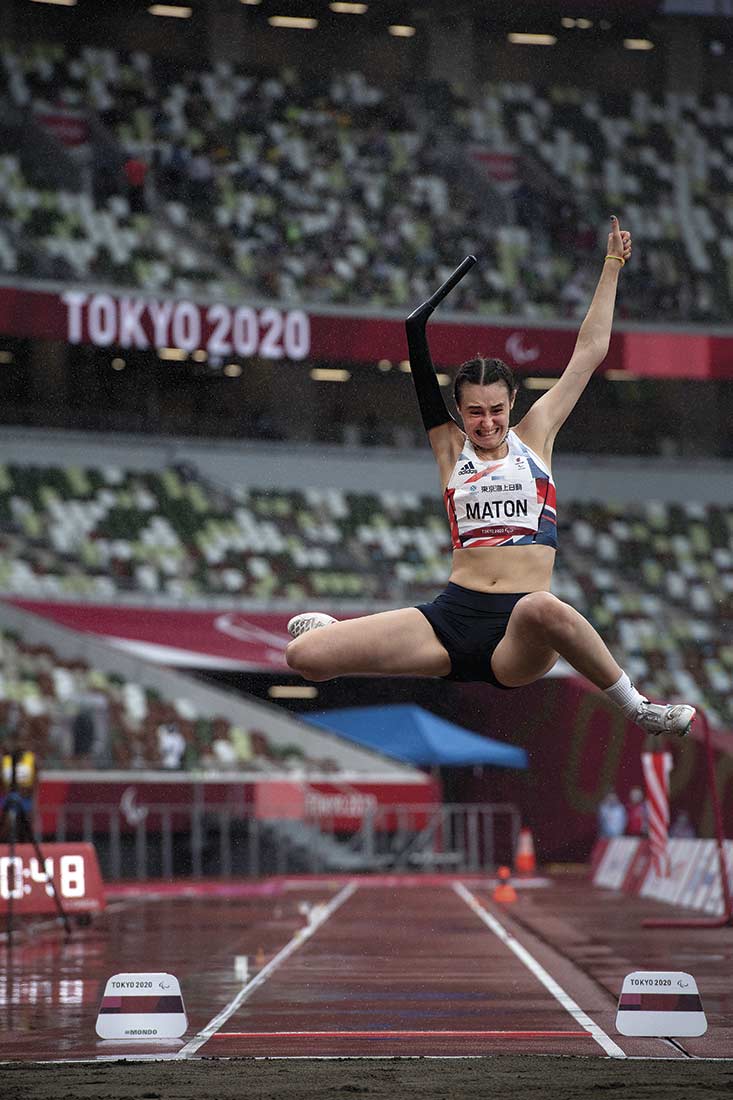PARALYMPIC WOMEN & THE POWER OF PERSEVERANCE
By Mark Edward Harris/Zuma Press
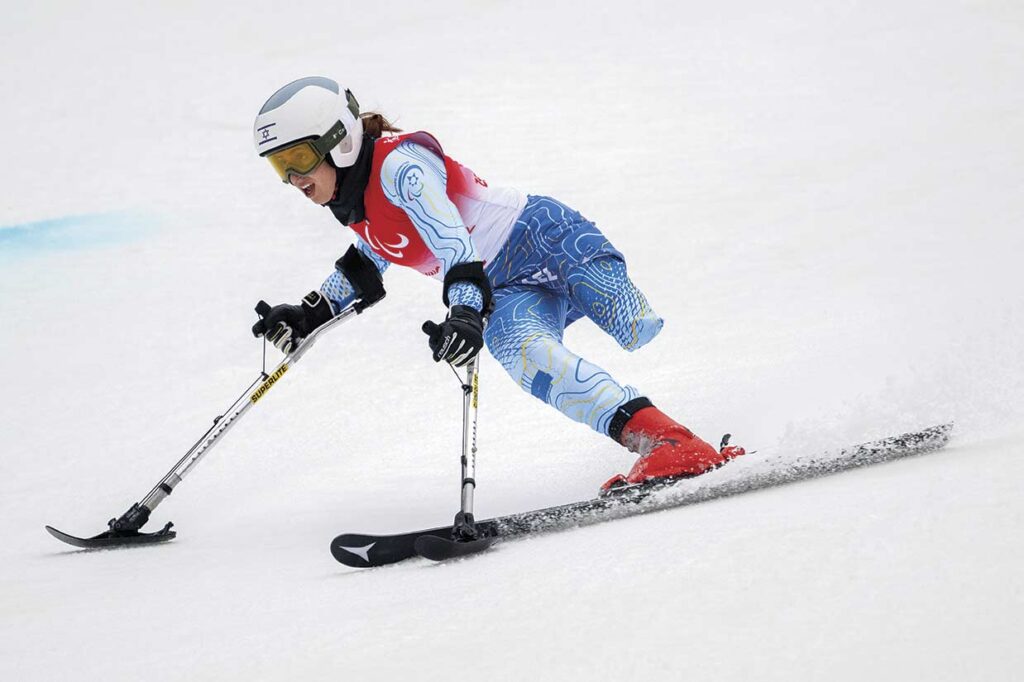
Mark Edward Harris/Zuma Press © All rights reserved.
The word “power” can be used figurately or literally when applied to people.
In the case of Paralympians, both are appropriate. In Beijing and Tokyo,
I documented athletes from around the globe coming together to participate in the greatest of athletic competitions.
Their backgrounds are as diverse as the countries and cultures they come from. To be eligible to compete in the Paralympic Games, an athlete must have at least one of 10 physical or intellectual impairments.
Some were born with these conditions, while others acquired them through disease or accident. But what they all have in common is the superior athletic ability and the drive to put themselves in front of the world at the Paralympics.
In other words, it was not only their physical prowess but the mental fortitude that got them there.

Mark Edward Harris/Zuma Press © All rights reserved.
The word “power” can be used figurately or literally when applied to people.
In the case of Paralympians, both are appropriate. In Beijing and Tokyo,
I documented athletes from around the globe coming together to participate in the greatest of athletic competitions.
Their backgrounds are as diverse as the countries and cultures they come from. To be eligible to compete in the Paralympic Games, an athlete must have at least one of 10 physical or intellectual impairments.
Some were born with these conditions, while others acquired them through disease or accident. But what they all have in common is the superior athletic ability and the drive to put themselves in front of the world at the Paralympics.
In other words, it was not only their physical prowess but the mental fortitude that got them there.
On February 24, four days after the end of the Beijing 2022 Winter Olympics and a week before the start of the Paralympics, Russian President Vladimir Putin began his full-scale invasion of Ukraine. As a result, the dynamics completely changed for all those involved in the Games in China’s capital. Initially, International Paralympics Committee President Andrew Parsons announced that the Paralympians from Russia and Belarus would be allowed to compete in the upcoming Paralympics.
There was so much protest from the other national teams –threatening to go home or not compete against or alongside the athletes from the Russian Olympic Committee or Belarus – that the initial decision was reversed.
As a result, I decided to adjust my focus and document as part of my coverage the Ukrainian Paralympians with the incredibly heavyweight of a besieged nation upon their shoulders and undoubtedly omnipresent in their minds.
Both the Ukrainian women and men dominated the cross-country and biathlon competitions. This included a clean sweep for the Ukrainians in the Women’s Middle Distance Standing Para Biathlon. Iryna Bui took gold, Oleksandra Kononova took silver, and Liudmyla Liashenko took the bronze medal at the Zhangjiakou National Biathlon Centre on March 8, 2022.
When covering large events, I’ve found it much more productive to focus on several storylines rather than try to be everywhere at the same time. The Olympics and Paralympics are far too big for that approach. The Winter Games, in particular, typically have indoor events in one area and outdoor events such as Alpine and cross-country skiing in distant locations.
For Beijing 2022, most of the outdoor events took place in Yanqing and Zhangjiakou.
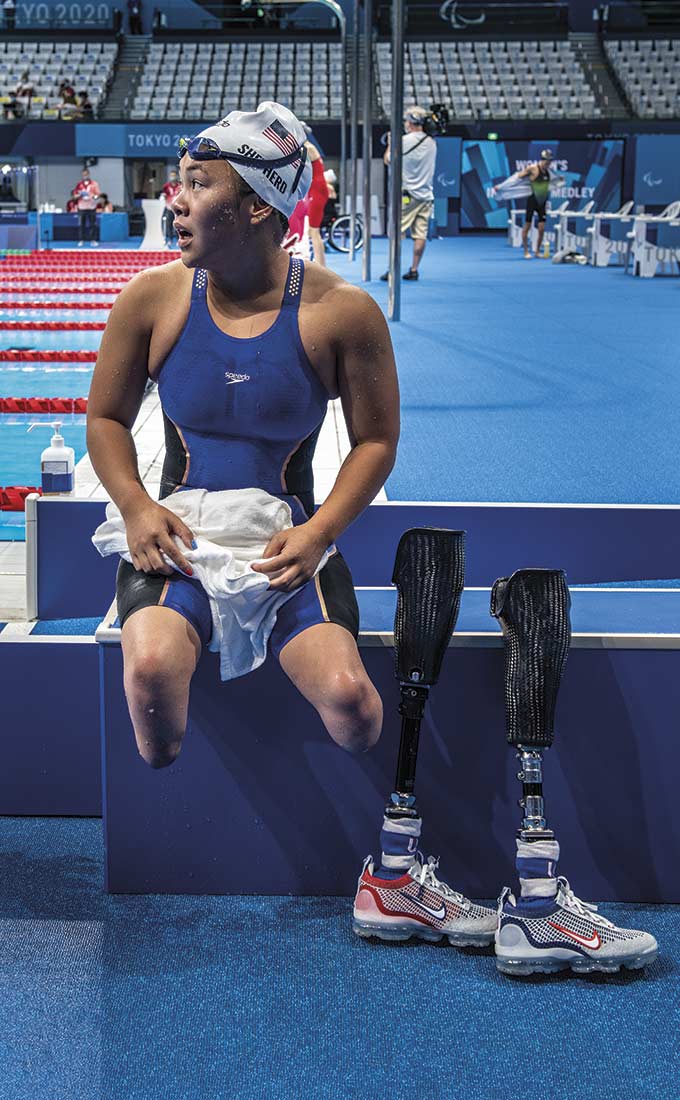
Team USA Paralympic swimmer Haven Shepherd checks the scoreboard after the women’s 200m individual medley heat on August 28, 2021, during the Tokyo 2020 Paralympics.
Mark Edward Harris/Zuma Press ©
All rights reserved.
Columbia’s Katty Hurtado competes in the Women’s 400m, Tokyo 2022 Paralympics.
Mark Edward Harris/Zuma Press © All rights reserved.
During the Tokyo 2020 Summer Paralympics, a part of my focus had been on Team USA Paralympians who were victims of life-changing violence outside the battlefield. Their individual stories and circumstances are different, but each had endured nightmares that easily could have derailed their life’s journeys to become elite athletes competing at the top of their respective sports.
Team USA swimmer Haven Shepherd lost her legs as a baby when her biological mother and father (who were married to other people) killed themselves with homemade bombs, while Dressage Equestrian Beatrice de Lavalette lost her legs from
a terrorist attack at the Brussels Airport in 2016. For my in-action photos of both athletes, I used a Nikon F6, and for portraits,
I set up a StellaPro CLx10 light in a collapsible softbox.
I also photographed another victim of violence, Sri Lankan Paralympian Premadasa Dissanayake, as she achieved her personal best in the long jump in Tokyo with a distance of 4.92 meters.
Dissanayake lost her hands and the vision in one eye to a hand grenade explosion when she was
age 16. She stated in the past her life’s philosophy:
“What matters is not a person’s limbs, but the mental courage to face life.”
Between the Summer and Winter Games, my first serious mirrorless camera arrived, so I came to Beijing with my Think Tank Airport Accelerator backpack packed with the new Nikon Z9 and Nikkor Z series 14-24mm f/2.8, 24-70mm f/2.8, 70-200mm f/2.8 lenses and 300mm f/4 and 500mm f/5.6 F mount lenses that could be used on the mirrorless body with the Mount Adapter FTZ II. Once in Beijing, I borrowed a second Z9 camera body and Nikkor Z 100-400mm f/4-5.6 or, when available, the much sought after Nikkor 400mm, f/2.8 from Nikon Professional Services (NPS) at the Main Media Center.
This incredibly sharp and fast lens comes with a big price tag but is well worth it for those who photograph sports or wildlife regularly and are willing to carry around a big piece of glass. Its built-in 1.4x teleconverter brings the focal length to 560mm.
With the Nikon Z9, I found 3D tracking in the continuous focus mode a particularly great tool for photographing sports when I could keep the athletes in constant sight. However, in competitions such as snowboarding, where they temporarily disappeared from sight after going down a slope then launching off a ramp, I found it best to focus on the ramp and then pick them up somewhere in the sky in the Dynamic Area AF mode.
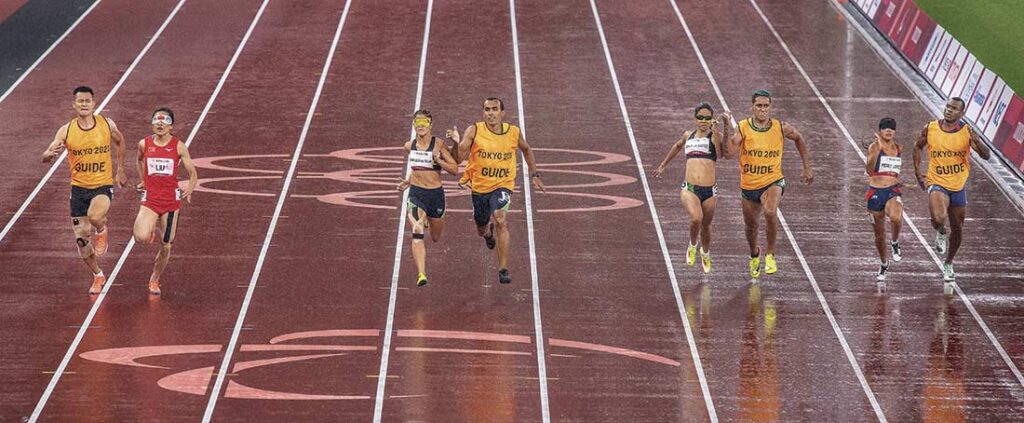
Mark Edward Harris/Zuma Press © All rights reserved.
Another technique I began using for the first time because of the advanced computer aboard the Z9 was to set my shutter speed and f/stop manually and let the camera choose the ISO in outdoor light-fluctuating conditions. In snowy conditions, in other words, where there was a lot of white, I would use the exposure compensation button, adding a +.03 to +1 to get the correct amount of light to the sensor. As for the subject matter itself – the athletes of the winter Paralympics – vibrant colors with red or orange were always welcome uniform colors.
At one time, I would have prefocused on an area such as the gates during the slalom and let the athlete pass through my plane of focus, depressing the shutter a moment before and having the motor drive continue until after the action had left the frame.
Now, however, with the incredibly fast focus and tracking abilities of the Z9, I would follow the skiers on the slalom course rather than going the prefocus route. Also, with the ability to shoot at 20 frames per second in RAW, the odds are increased for getting the decisive moment of action.
This, however, creates the need for high capacity yet highly portable external hard drives. The demure but powerful two-terabyte OWC Envoy Pro Elektron external hard drive has become my go-to travel companion. Shooting many images also requires a filing system that avoids ending up with files with the same names.
For one camera body, I used PO – for Paralympics – then a letter so POA, POB, POC, and so on for each day and followed by the original file number. For my second camera body, I us PO for Paralympics then a number so PO1, PO2, PO3 until P09, so my complete processed file might look like: China_Beijing_Paralympics_POA_0523.tiff.
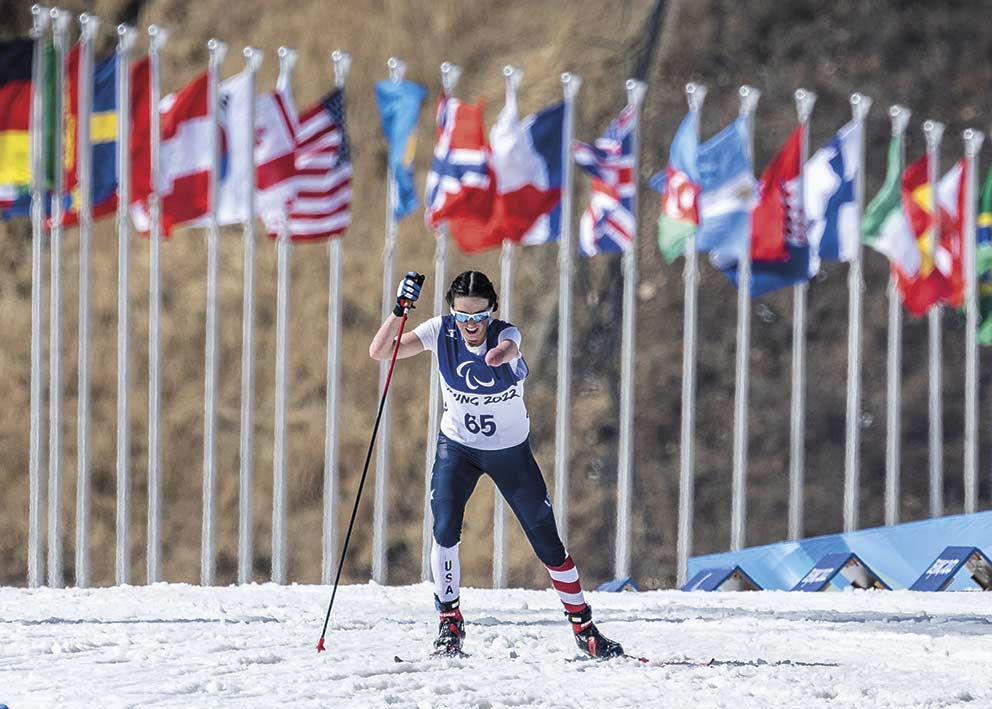
Mark Edward Harris/Zuma Press © All rights reserved.
Part of my interest in the Paralympics might be from having a father who had a severe case of polio, but it never stopped him from having a rich, productive life.
Despite having one atrophied arm and a severely curved backbone, he was a great athlete.
This might have given me extra insight into the lives of Paralympians and how they are able to power through the additional challenges they face on and off the field of competition.
On the back of Team USA sled-hockey goalie Jen Lee’s helmet are the words,
“WHERE THERE’S A WILL THERE’S A WAY.”
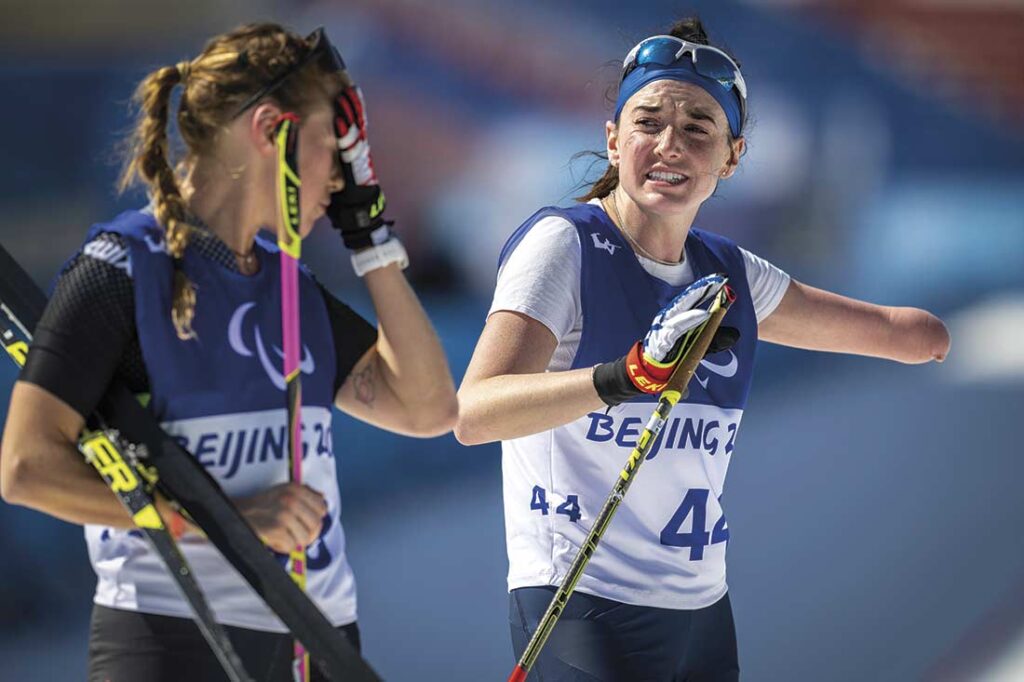
Mark Edward Harris/Zuma Press © All rights reserved.
While his team won the gold medal at the Beijing 2022 Winter Paralympic Games beating Team Canada 5-0, the saying extends to every one of the athletes that made it not only to Beijing and Tokyo but all the others that have participated in the Paralympics which began with a small group of injured British World War II veterans in 1948 and has grown to one of the world’s largest international sporting events.
Mark Edward Harris

Assignments have taken Los Angeles and Tokyo-based photographer Mark Edward Harris to more than 100 countries and all seven continents. His editorial work has appeared in publications such as Vanity Fair, LIFE, The New York Times, The Washington Post, Time Magazine, GEO, Newsweek, Conde Nast Traveler, National Geographic Traveler, AFAR, Wallpaper, Vogue, Architectural Digest, The Los Angeles Times Magazine, and The London Sunday Times Travel Magazine as well as all the major photography and in-flight magazines. Among his numerous accolades are CLIO, ACE, Impact DOCS Award of Excellence, Aurora Gold, and IPA awards. His books include Faces of the Twentieth Century: Master Photographers and Their Work, The Way of the Japanese Bath, Wanderlust, North Korea, South Korea, Inside Iran, The Travel Photo Essay: Describing
A Journey Through Images, and his latest, The People of the Forest, a book about orangutans.

